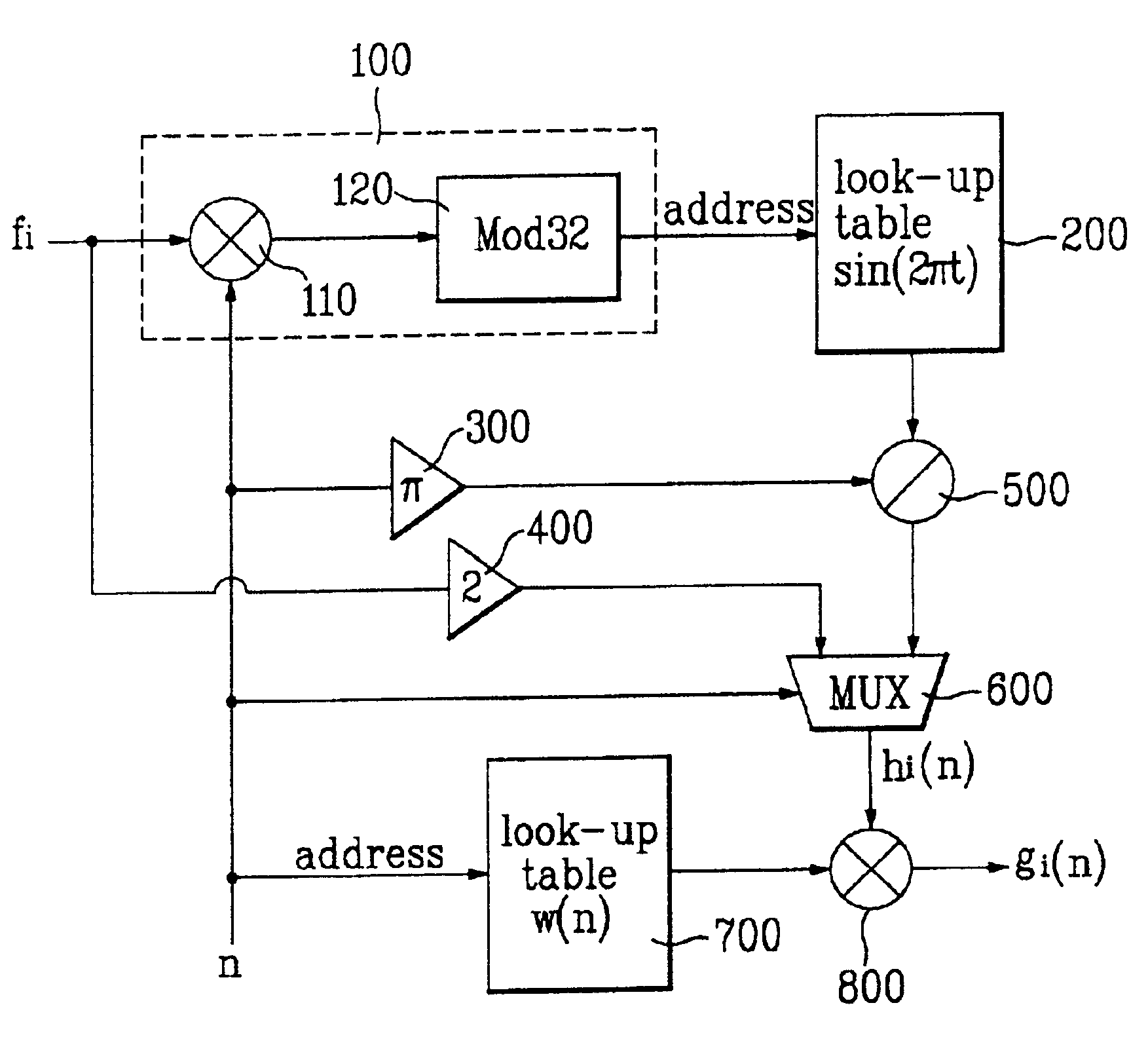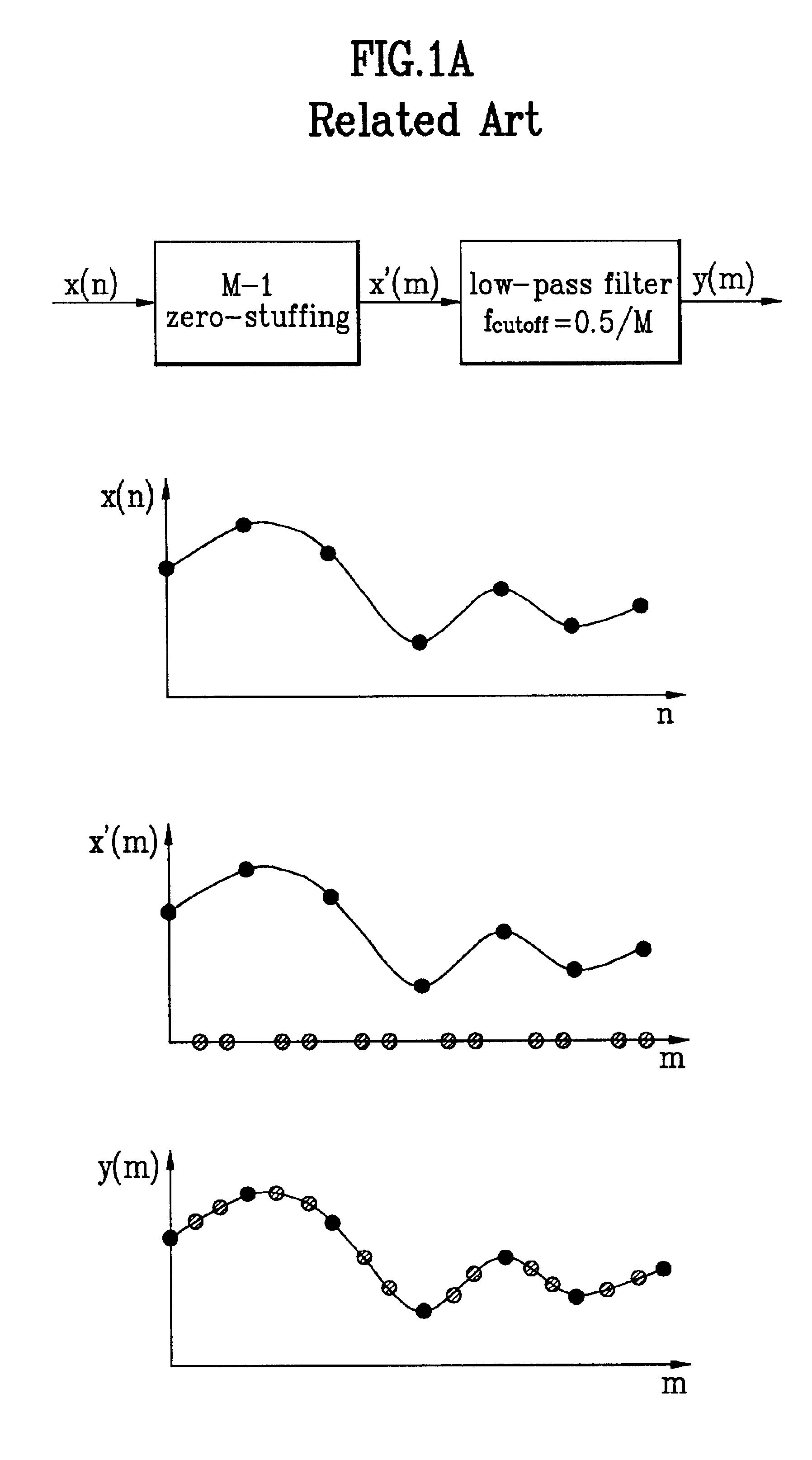Filter coefficient generator
a filter coefficient and generator technology, applied in pulse manipulation, pulse technique, instruments, etc., can solve the problems of inability to timely generate filter coefficients necessary for changes such as display modes and image formats, and inability to timely generate filter coefficients for changes
- Summary
- Abstract
- Description
- Claims
- Application Information
AI Technical Summary
Benefits of technology
Problems solved by technology
Method used
Image
Examples
Embodiment Construction
[0024]Reference will now be made in detail to the preferred embodiments of the present invention, examples of which are illustrated in the accompanying drawings.
[0025]Filters used for sampling rate conversion caused by display mode and image format changes generally require low-pass characteristics, and the values of filter coefficients must be promptly updated based on the rates of input and output data. However, the present invention is nonly limited only to low-pass filters, but rather involves general filters that include any one of low-pass, high-pass, and band-pass characteristics.
[0026]FIG. 3 illustrates the magnitude function of a filter having f1 and f2 as its low and high cutoff frequencies. The impulse response of the filter can be obtained by using an inverse Fourier transformation as follows. [Eq.1]h(n)=F-1{H(f)}=∫-f2f2ⅇj 2 π fnⅆf-∫-f1f1ⅇj 2 π fnⅆf=2f2sin c(2π f2n)-2f1sin c(2π f1n)=sin(2π f2n)π n-sin(2π f1n)π n
where F−1...
PUM
 Login to View More
Login to View More Abstract
Description
Claims
Application Information
 Login to View More
Login to View More - R&D
- Intellectual Property
- Life Sciences
- Materials
- Tech Scout
- Unparalleled Data Quality
- Higher Quality Content
- 60% Fewer Hallucinations
Browse by: Latest US Patents, China's latest patents, Technical Efficacy Thesaurus, Application Domain, Technology Topic, Popular Technical Reports.
© 2025 PatSnap. All rights reserved.Legal|Privacy policy|Modern Slavery Act Transparency Statement|Sitemap|About US| Contact US: help@patsnap.com



